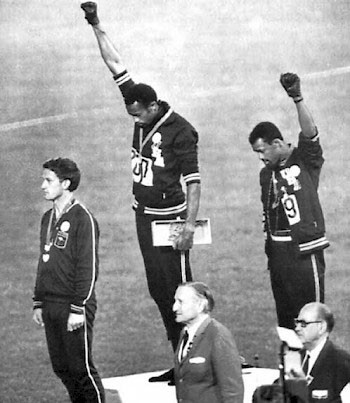GVSU professor to lecture on activism of black athletes

GVL / Courtesy – drkensagunter.com
Feb 1, 2018
Jesse Owens won the 100-meter Olympic gold in 1936 in front of Adolf Hitler. He returned to the U.S. with four Olympic gold medals and international fame. However, Owens arrived home to be confronted by racism, and he struggled to find work. He is one example of a black athlete who has affected black activism in the U.S.
Louis Moore, associate history professor and coordinator of African/African-American studies at Grand Valley State University, will host the “Black Activism Through Sports” event taking place Tuesday, Feb. 6, from noon to 1:30 p.m. in the Kirkhof Center, Room 2215. The event is part of the Office of Multicultural Affairs’ (OMA) celebration of Black History Month. Moore will go through a history of black athletes, the struggles they have faced and the social impact they have had on society.
“They were willing to risk their lives to improve their nation,” Moore said. “So much history looks at black athletes as entertainers. Activists do more than just play: They show up and break down structural inequality.”
Moore will begin his presentation with a brief history of black athletes such as Jackie Robinson, Bill Russell and Muhammad Ali. He will then discuss how these athletes relate to present day. Moore said we see similar trends today as we did in the past.
Moore said many athletes ride the fence and don’t want to be too controversial, fearing for their sponsorships or even their jobs. However, some athletes fight through the controversy, and it is possible to juxtapose those athletes of the past to those of today.
Colin Kaepernick, for example, started the trend of kneeling during the national anthem. Some see this as disrespectful, while others view it as necessary attention being drawn to police brutality and inequality in the U.S. Regardless, Kaepernick fought for what he believed in, arguably similar to how Robinson faced racism for becoming the first African-American player to join Major League Baseball. All around, the picture is painted that athletes of color have had large impacts in movements they have started or joined.
“Historically, for African-Americans, sports have been a huge part of our identity,” said Juanita Davis, assistant director of the OMA. “The activism piece is about who we are, that combination of different athletes throughout the course of history used their platform to bring attention to issues.
“These issues have been historically and systematically ignored.”
Davis said one of the goals for having events like this is for students to understand experiences of African-Americans in the U.S. historically. She hopes this will provide students with the materials necessary to have conversations and critical dialogue with other people.
Davis believes that having a willingness to listen is crucial for conversations with people of different backgrounds or beliefs, not necessarily turning the event into a debate. The goal of these talks is to understand others’ experiences. This, Davis believes, will help bring people of differing backgrounds together.
Following “Black Activism Through Sports,” the next event to celebrate Black History Month at GVSU will be “Body Image and Blackness” taking place Friday, Feb. 9, in the Kirkhof Center. To find out more information about Black History Month or these events, visit www.gvsu.edu/oma/black-history-month-24.htm.





















